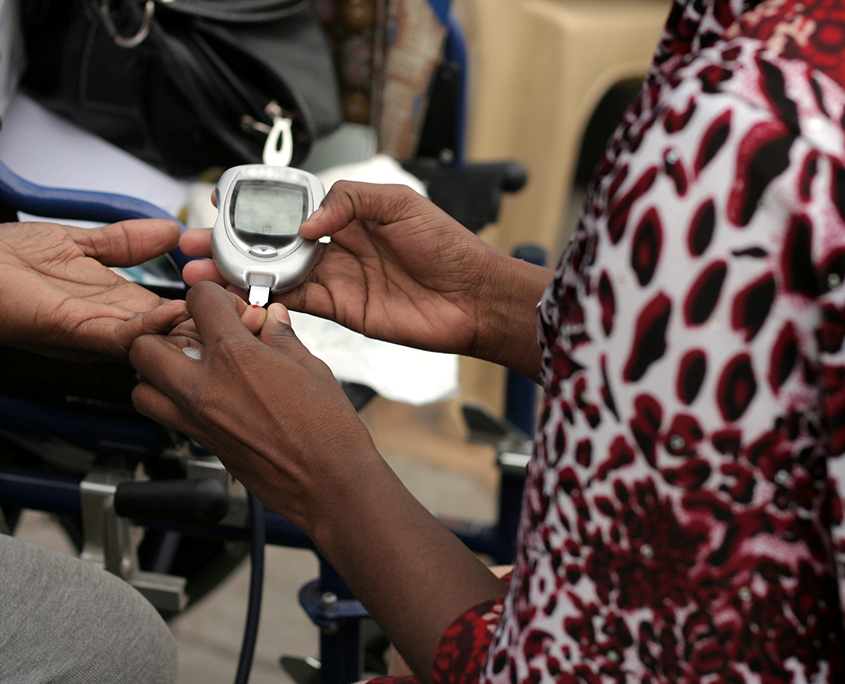A nurse checking the blood sugar level of woman in a medical camp
Photo Credit: reddees/iStock/Getty Images
World Diabetes Day
A broad definition of diabetes is that it a condition that impairs the body’s ability to process blood glucose, also known as blood sugar. On December 20, 2006, the United Nations (UN) passed a resolution to designate November 14 as World Diabetes Day. The occasion aimed to raise awareness of diabetes, its prevention and complications, and the care that people with the condition need.
In 2017, it was estimated that 451 million people have diabetes and this figure is expected to increase to 693 million by 2045. (IDF Diabetes Atlas). Governments, non-governmental organizations, and private businesses are encouraged to increase awareness of the disease, particularly among the general population and the media.
The history of diabetes
In 1552 B.C., Hesyra, an Egyptian physician first documented a mysterious disease whose symptoms were frequent urination. Around this time, ancient healers noticed that ants were attracted to the urine of people who had this condition [diabetes].
“Water tasters” were employed centuries later to taste the urine of people suspected to have diabetes. From this, a diagnosis was formed; if the urine tasted sweet, diabetes was diagnosed (diabetes mellitus). Thank goodness for technology right?
Nowadays, testing for diabetes has become easy and it can even be done in the comfort of one’s home with the help of a test kit. A chart exists to show the normal range of blood sugar too!
There exist two types of diabetes: Type 1 diabetes is caused when the cells that produce insulin are attacked by the body’s defense system, which causes a low production/ no production of insulin. Referring back to Biology class, insulin is a hormone that is made by the pancreas allowing your body to use sugar from carbohydrates in the food you eat for energy or storage of sugar (glucose) for future use.
On the other hand, type 2 diabetes is characterised by insulin resistance. In this case, the body does not fully respond to insulin. Therefore, blood glucose levels keep rising because insulin cannot work properly causing more release of insulin.
At the moment, type 1 diabetes is unpreventable. The environmental triggers thought to generate the process that destroys the body’s insulin-producing cells are still under investigation. With type 2 diabetes, lifestyle behaviours associated with urbanisation are the most influential causes; consuming unhealthy foods and living inactive lifestyles are some of the onsets of the condition.
Treatment of type 1 and type 2 diabetes
Regular injection of insulin into the body is administered to people with type 1 diabetes. Other people use insulin pumps whereby a steady amount of insulin is pumped into the body through a small tube. Because levels can go up and down quickly, testing of blood sugar is essential in the management of type 1 diabetes.
Type 2 diabetes requires a change in diet (a healthier option as advised by a medical doctor) and exercise, this can help in controlling it and even reversing it. A doctor can also prescribe medication to help in the effective use of insulin in your body.
World Diabetes Day aims to spread and raise awareness and provide affordable care to all. With “The Family and Diabetes” being the 2018 and 2019 theme, the campaign is to raise awareness of the impact that diabetes has on the family. It also promotes the role of the family in the management, care, prevention, and education of the condition.



